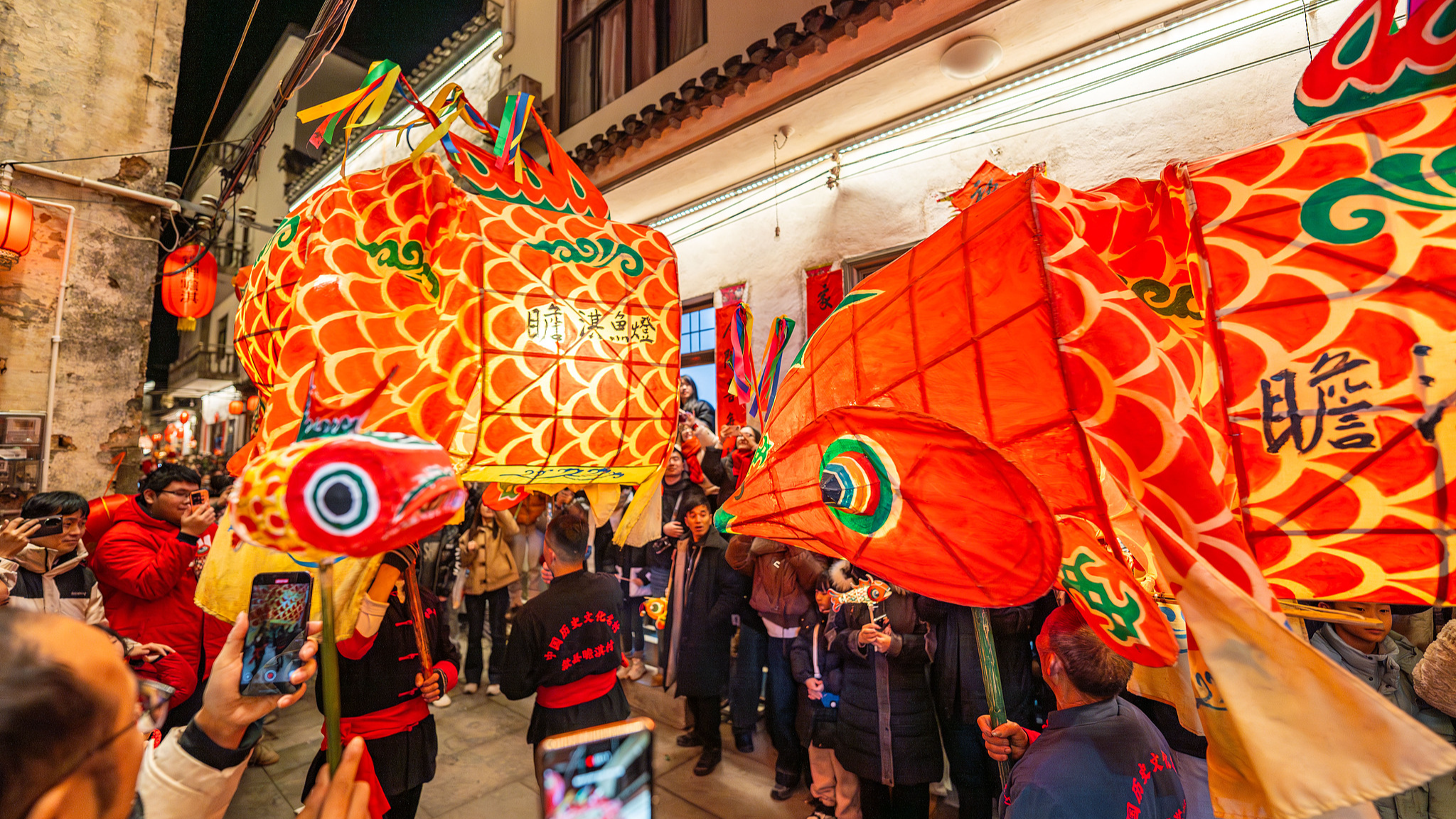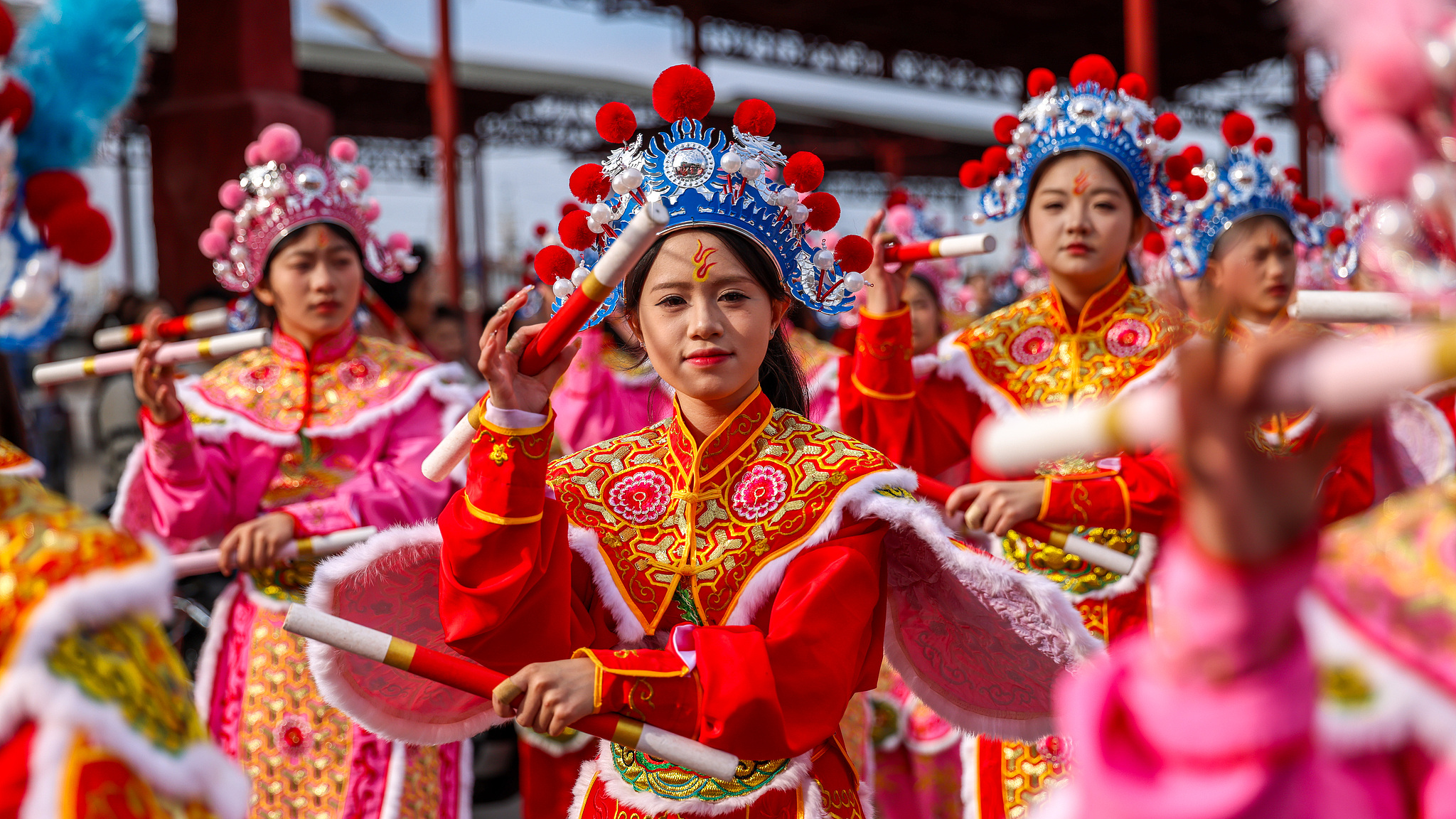Spring Festival tourism and consumption boom in China
From:CGTNAuthor: 2025-02-06 10:42

Visitors marvel at the fish-shaped lanterns in Huangshan City, east China's Anhui Province, February 3, 2025. /CFP
The 2025 Spring Festival holiday, which ran from January 28 to February 4, saw a tourism and consumption boom across China.
According to the Ministry of Culture and Tourism, 501 million domestic trips were taken during the eight-day holiday, marking a 5.9 percent year-on-year increase. Total domestic spending reached 677 billion yuan ($93 billion), up 7 percent from last year.

The growth is largely attributed to this year's Spring Festival being the first since its addition to UNESCO's Representative List of the Intangible Cultural Heritage of Humanity.
Cultural tourism also thrived. Museum travel fever saw museums like the Palace Museum in Beijing, the Shaanxi History Museum in the ancient city of Xi'an in Shaanxi Province and the Sanxingdui Museumin Guanghan City, Sichuan Province, drawing many holidaymakers.
Traditional performances also made waves, with spectacular light shows and evening cultural events taking center stage. For example, time-honored fish-shaped lanterns entertained many travelers in east China's Huangshan City. Meanwhile, the traditional Yingge dance, or "dance to the hero's song," attracted many visitors to linger in south China's Shantou City.

The Yingge Dance in Shantou City, south China's Guangdong Province, January 29, 2025. /CFP
Data from Ctrip, a leading Chinese online travel agency, showed that popular destinations featuring intangible cultural heritage, such as Kaifeng in central China's Henan Province, Shantou in south China's Guangdong Province and Huangshan in east China's Anhui Province, saw a doubling of search volume. Meanwhile, during the holiday, travel bookings in Shantou, Kaifeng, and Huangshan increased by 20 to 40 percent compared to last year.
Winter tourism remained a hot trend, with ski resorts in regions such as Yabuli in northeast China and Altay in northwest China experiencing high visitor numbers. Meanwhile, warmer destinations in south China's provinces, such as Hainan, Guangxi, and Yunnan, saw an uptick in tourism as many sought to escape the cold weather in northern China.
Notably, tech innovations played a key role in enhancing the holiday experience, from AI-guided tours to AI-themed temple fairs. In central China's Liuyang City, known as the world's fireworks hub, visitors enjoyed a new experience with displays incorporating drones, holographic projections, and other technologies, creating mesmerizing effects like meteor showers.

A foreigner poses with a tanghulu, a sugar-coated traditional Chinese snack, at a temple fair in Qingdao City, east China's Shandong Province, January 31, 2025. /CFP
Cross-border tourism also saw growth, with 14.37 million international trips recorded during the holiday, marking a 6.3 percent increase from last year, according to the National Immigration Administration (NIA).
Of these, 7.67 million were made by mainland Chinese residents. Meanwhile, according to the NIA, nearly 5.74 million came from Hong Kong, Macao, and Taiwan, reflecting a growth of 5 percent and 5.6 percent, respectively.
International tourists were also keen to explore China, with 958,000 foreigners making cross-border trips during the holiday, a 22.9 percent increase compared to the previous year, said the NIA.
Data from Ctrip revealed that bookings for inbound tourism surged, with ticket orders growing by 180 percent compared to last year's holiday, and hotel bookings seeing an increase of over 60 percent.
It also said destinations showcasing intangible cultural heritage, such as north China's Shijiazhuang City, southeast China's Fuzhou City, and northwest China's Xi'an City, saw impressive growth in bookings, with increases of 50 percent, 52 percent, and 97 percent, respectively.
With vibrant tourism, cultural celebrations, and tech-driven experiences, this year's Spring Festival cemented its status as a global spectacle.
Edit:董丽娜
The copyright of the article and the picture belongs to the original author. If there is any infringement, please contact to delete it